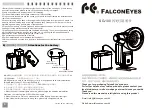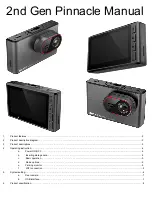
actual case. The two temperatures are normally less of a problem provided the surround-
ings do not contain large and intense radiation sources.
A natural question in this connection is: How important is it to know the right values of
these parameters? It could though be of interest to get a feeling for this problem already
here by looking into some different measurement cases and compare the relative magni-
tudes of the three radiation terms. This will give indications about when it is important to
use correct values of which parameters.
The figures below illustrates the relative magnitudes of the three radiation contributions for
three different object temperatures, two emittances, and two spectral ranges: SW and LW.
Remaining parameters have the following fixed values:
• τ = 0.88
• T
refl
= +20°C (+68°F)
• T
atm
= +20°C (+68°F)
It is obvious that measurement of low object temperatures are more critical than measur-
ing high temperatures since the ‘disturbing’ radiation sources are relatively much stronger
in the first case. Should also the object emittance be low, the situation would be still more
difficult.
We have finally to answer a question about the importance of being allowed to use the cal-
ibration curve above the highest calibration point, what we call extrapolation. Imagine that
we in a certain case measure U
tot
= 4.5 volts. The highest calibration point for the camera
was in the order of 4.1 volts, a value unknown to the operator. Thus, even if the object hap-
pened to be a blackbody, i.e. U
obj
= U
tot
, we are actually performing extrapolation of the
calibration curve when converting 4.5 volts into temperature.
Let us now assume that the object is not black, it has an emittance of 0.75, and the trans-
mittance is 0.92. We also assume that the two second terms of Equation 4 amount to 0.5
volts together. Computation of U
obj
by means of Equation 4 then results in U
obj
= 4.5 / 0.75
/ 0.92 – 0.5 = 6.0. This is a rather extreme extrapolation, particularly when considering that
the video amplifier might limit the output to 5 volts! Note, though, that the application of the
calibration curve is a theoretical procedure where no electronic or other limitations exist.
We trust that if there had been no signal limitations in the camera, and if it had been cali-
brated far beyond 5 volts, the resulting curve would have been very much the same as our
real curve extrapolated beyond 4.1 volts, provided the calibration algorithm is based on ra-
diation physics, like the FLIR Systems algorithm. Of course there must be a limit to such
extrapolations.
#T810190; r. AI/41890/41890; en-US
249
Содержание Exx series
Страница 1: ...User s manual FLIR Exx series ...
Страница 2: ......
Страница 3: ...User s manual FLIR Exx series T810190 r AI 41890 41890 en US iii ...
Страница 4: ......
Страница 12: ......
Страница 51: ...Handling the camera 10 T810190 r AI 41890 41890 en US 39 ...
Страница 54: ...Handling the camera 10 10 15 Lanyard strap 10 15 1 General T810190 r AI 41890 41890 en US 42 ...
Страница 226: ...Mechanical drawings 27 See next page T810190 r AI 41890 41890 en US 214 ...
Страница 228: ...CE Declaration of conformity 28 See next page T810190 r AI 41890 41890 en US 216 ...
Страница 229: ......
Страница 234: ...Application examples 29 T810190 r AI 41890 41890 en US 222 ...
Страница 275: ......
Страница 277: ......
















































